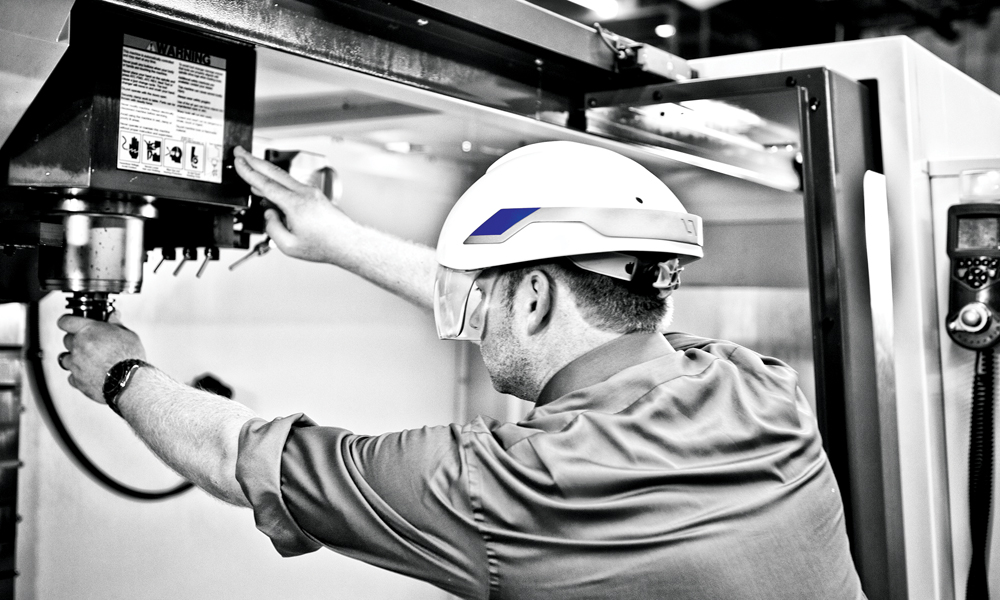Smart Helmet—it’s a hard hat on steroids.
The helmet is equipped with an array of cameras that provides 360-degree vision through its glass visor, even in low light. The helmet’s “visual-inertial navigation” enables the wearer to map the work environment and share the data wirelessly with other helmet wearers on the job site. The Smart Helmet’s “Intellitrack” system is capable of object recognition and tracking.
Los Angeles-based manufacturer Daqri started shipping Smart Helmets (retail price: $1,500) in October. The company is targeting the industrial sector, but President Andy Lowery says that the augmented reality helmet could work in commercial construction for training purposes and job site communication.
“Work instructions could be overlaid on top of building materials, decreasing human error, reducing training time, and accelerating building projects,” says Lowery. The hard hat could also be used to uncover electrical hot spots before they cause trouble.
Read about more innovations from BD+C's 2014 Great Solutions Report.
Related Stories
| Aug 19, 2011
Enhanced acoustical design
Ambient noise levels in some facility types are trending up and becoming a barrier to clear communication between building occupants.
| Jul 22, 2011
The Right Platform for IPD
Workstations for successful integrated project delivery, a white paper by Dell and BD+C.
| Jul 22, 2011
High-performance windows and doors
Learning objectives After reading this article, you should be able to: Understand issues of thermal performance and energy efficiency in relation to window and door systems; describe optimal detailing of the window-wall interface and how it contributes to building performance, sustainability, and occupant well-being; understand how durability contributes to sustainable windows/doors; and list sustainable O&M requirements for window and door systems.
| Jul 21, 2011
Falling Architecture Billings Index reflects decrease in design demands
This months Architecture Billings Index (ABI), provided by the American Institute of Architects, is almost a full point lower than last month’s reported score. June’s reading of 47.2 was short of the required 50 to achieve billings increases, making July’s reading of 46.3 an unwelcome sign of market tidings.
| Jun 29, 2011
New leadership role for architects in net-zero design
BD+C Editorial Director Rob Cassidy talks with RNL Design's Tom Hootman, AIA, about the changing role of architects in net-zero designs.














